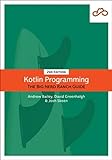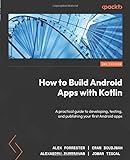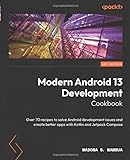To add multiple JSON objects to a JSON array in Kotlin, you can first create a JSON array and then use the add method to add individual JSON objects to it. You can create JSON objects using the JsonObject class in Kotlin and fill them with the desired key-value pairs. Once you have created the JSON objects, simply add them to the JSON array using the add method. Finally, you can convert the JSON array to a string using the toString method. This way, you can add multiple JSON objects to a JSON array in Kotlin.
What is the maximum size limit for a JSON array containing multiple JSON objects in Kotlin?
There is no specific maximum size limit for a JSON array containing multiple JSON objects in Kotlin. The size limit would depend on the memory available to the application and the hardware on which it is running. However, it is recommended to keep the size of the JSON array within reasonable limits to avoid performance issues and memory consumption.
How to validate the structure of a JSON array containing multiple JSON objects in Kotlin?
To validate the structure of a JSON array containing multiple JSON objects in Kotlin, you can use a library like org.json or Gson to parse the JSON string and then perform validation checks on the parsed JSON objects. Here's an example using the Gson library:
- Add the Gson dependency to your build.gradle.kts file:
1 2 3 |
dependencies { implementation("com.google.code.gson:gson:2.8.8") } |
- Write a function to validate the structure of the JSON array:
1 2 3 4 5 6 7 8 9 10 11 12 13 14 15 16 17 18 19 20 21 22 23 24 25 26 27 28 |
import com.google.gson.Gson import com.google.gson.JsonArray import com.google.gson.JsonObject import com.google.gson.JsonSyntaxException fun validateJsonArray(jsonString: String): Boolean { try { val gson = Gson() val jsonArray = gson.fromJson(jsonString, JsonArray::class.java) for (jsonElement in jsonArray) { if (jsonElement !is JsonObject) { return false } val jsonObject = jsonElement as JsonObject // Perform validation checks on the JSON object // For example, check if it contains certain keys or values if (!jsonObject.has("key1") || !jsonObject.has("key2")) { return false } } return true } catch (e: JsonSyntaxException) { return false } } |
- Use the validateJsonArray function to validate a JSON array string:
1 2 3 4 5 6 7 8 |
val jsonString = "[{\"key1\": \"value1\", \"key2\": \"value2\"}, {\"key1\": \"value1\", \"key2\": \"value2\"}]" val isValid = validateJsonArray(jsonString) if (isValid) { println("JSON array is valid") } else { println("JSON array is not valid") } |
This example demonstrates how to validate the structure of a JSON array containing multiple JSON objects in Kotlin using the Gson library. You can customize the validation checks based on your specific requirements.
What is the significance of having a flexible JSON array containing multiple JSON objects in Kotlin?
Having a flexible JSON array containing multiple JSON objects in Kotlin allows for easily representing and working with complex data structures in a dynamic and versatile way. This is especially significant in scenarios where the data being handled is not fixed and may vary in structure or size.
Some key benefits and significance of having a flexible JSON array containing multiple JSON objects in Kotlin include:
- Dynamic data handling: With a flexible JSON array, you can easily add, remove, or modify JSON objects within the array, providing flexibility in working with dynamic data sets.
- Easy data manipulation: The ability to store and access multiple JSON objects within a single array simplifies data manipulation operations such as filtering, sorting, and searching.
- Improved code readability: Using a flexible JSON array makes it easier to organize and manage complex data structures, leading to improved code readability and maintainability.
- Enhanced scalability: With a flexible JSON array, your application can easily scale to handle larger and more diverse sets of data, without the need for significant changes to the underlying data structure.
Overall, having a flexible JSON array containing multiple JSON objects in Kotlin provides a powerful and versatile way to represent and manage complex data structures, making it an essential tool for building robust and dynamic applications.
How to loop through a JSON array and add multiple JSON objects in Kotlin?
You can loop through a JSON array in Kotlin using a forEach or a for loop, and then add multiple JSON objects to it. Here is an example of how to do this:
1 2 3 4 5 6 7 8 9 10 11 12 13 14 15 16 17 18 19 20 21 22 23 |
import org.json.JSONArray import org.json.JSONObject fun main() { val jsonArray = JSONArray() val jsonObject1 = JSONObject() jsonObject1.put("name", "Alice") jsonObject1.put("age", 30) val jsonObject2 = JSONObject() jsonObject2.put("name", "Bob") jsonObject2.put("age", 25) jsonArray.put(jsonObject1) jsonArray.put(jsonObject2) // Loop through the JSON array for (i in 0 until jsonArray.length()) { val obj = jsonArray.getJSONObject(i) println("Name: ${obj.getString("name")}, Age: ${obj.getInt("age")}") } } |
In this example, we create a JSON array and two JSON objects. We add the JSON objects to the array using the put method. Then, we loop through the JSON array using a for loop and print out the name and age properties of each JSON object.
You can further customize the JSON objects and array based on your requirements.
How to deserialize a JSON array with multiple JSON objects in Kotlin?
To deserialize a JSON array with multiple JSON objects in Kotlin, you can use the Gson library provided by Google. Here's a step-by-step guide on how to achieve this:
- Add the Gson library dependency to your Kotlin project. You can do this by adding the following line to your build.gradle file:
1 2 3 |
dependencies { implementation 'com.google.code.gson:gson:2.8.8' } |
- Create a data class that represents the structure of the JSON objects in the JSON array. For example, if your JSON objects have keys "name" and "age", you can create a data class like this:
1
|
data class Person(val name: String, val age: Int)
|
- Use Gson to deserialize the JSON array into a list of objects of the data class you created. Here's an example code snippet that demonstrates how to do this:
1 2 3 4 5 6 7 8 9 10 11 12 13 |
import com.google.gson.Gson fun main() { val json = "[{\"name\":\"Alice\",\"age\":30},{\"name\":\"Bob\",\"age\":35}]" val gson = Gson() val listType = object : TypeToken<List<Person>>() {}.type val persons: List<Person> = gson.fromJson(json, listType) persons.forEach { println("Name: ${it.name}, Age: ${it.age}") } } |
In this example, we have a JSON array of persons with names and ages. We use Gson to deserialize the JSON array into a list of Person objects. Finally, we iterate over the list of Person objects and print out their names and ages.
That's it! You have successfully deserialized a JSON array with multiple JSON objects in Kotlin using Gson.
How to manage memory usage when working with large JSON arrays containing multiple JSON objects in Kotlin?
- Use a streaming JSON parser: Instead of loading the entire JSON array into memory at once, consider using a streaming JSON parser that allows you to process the JSON data incrementally. This way, you can read and process each JSON object in the array individually without having to load the entire array into memory.
- Use a lazy loading approach: If you need to access only a subset of the JSON objects in the array, consider implementing a lazy loading mechanism where you load JSON objects into memory only when they are needed. This can help reduce memory usage by only loading the necessary data at a given time.
- Optimize memory allocation: Make sure to optimize memory allocation by reusing objects where possible, avoiding unnecessary object creation, and properly managing object references to prevent memory leaks.
- Increase memory efficiency: Consider using libraries or techniques that provide memory optimization features, such as object pooling, to improve memory efficiency when working with large JSON arrays.
- Use compression techniques: If the JSON data is stored in a file or transferred over the network, consider using compression techniques to reduce the amount of memory needed to store or process the JSON data.
- Monitor memory usage: Implement monitoring mechanisms to track memory usage and identify potential memory leaks or areas where memory usage can be optimized. Use tools like the Android Profiler or the Memory Profiler in Android Studio to analyze memory usage patterns and identify potential issues.
By implementing these strategies, you can effectively manage memory usage when working with large JSON arrays containing multiple JSON objects in Kotlin.









